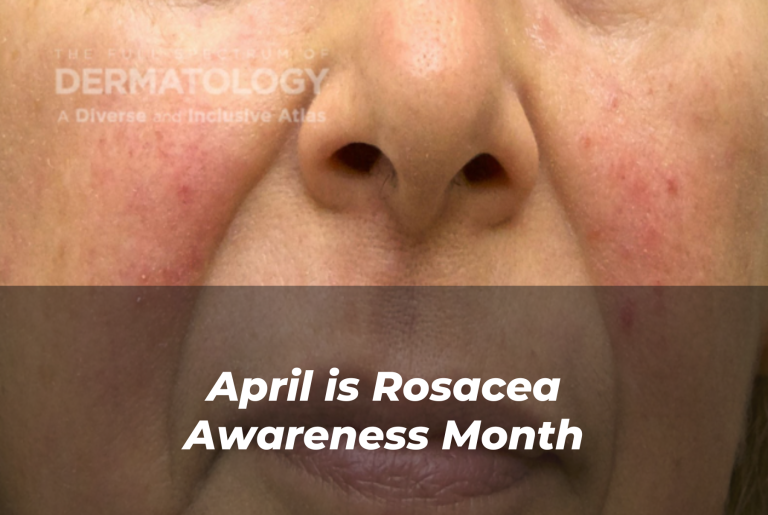
Spotlight on Rosacea: Beyond the Redness This National Rosacea Month
April marks National Rosacea Month, a timely reminder for dermatology professionals to sharpen their diagnostic lens beyond textbook erythema. While the classic presentation of persistent facial redness is well established, rosacea’s nuances demand a more discerning eye.
As mentioned in the Full Spectrum of Dermatology: A Diverse and Inclusive Atlas, erythematous, violaceous, or hyperpigmented patches with telangiectasias often grace the cheeks and glabella, but in darker skin tones, rosacea can masquerade differently. Acneiform papules paired with subtle phymatous changes—manifesting as pronounced, dilated follicular ostia—may provide a more telling clue. Recognizing these subtleties ensures more accurate and earlier diagnosis, preventing unnecessary treatment delays.
One of rosacea’s earliest signs, flushing, is easily overlooked, particularly in patients with darker skin tones. It may not present as the characteristic transient erythema seen in lighter skin but is often accompanied by a universal patient-reported sensation: warmth. This subjective clue is a critical piece of the diagnostic puzzle and should not be underestimated.
Guideline-based criteria emphasize persistent erythema as an essential feature, but real-world practice often requires flexibility. By expanding our diagnostic approach, we can better serve all patients, ensuring that rosacea in every skin tone receives the recognition—and treatment—it deserves.
Let National Rosacea Month be a call to catch up on JDD’s rosacea articles. Start here:
Neurogenic Rosacea Treatment: A Literature Review
Vessel-Targeting Therapies for the Management of Rosacea: A Review of Current Evidence
Placement of High Dose Neurotoxins for Treatment-Resistant Rosacea






